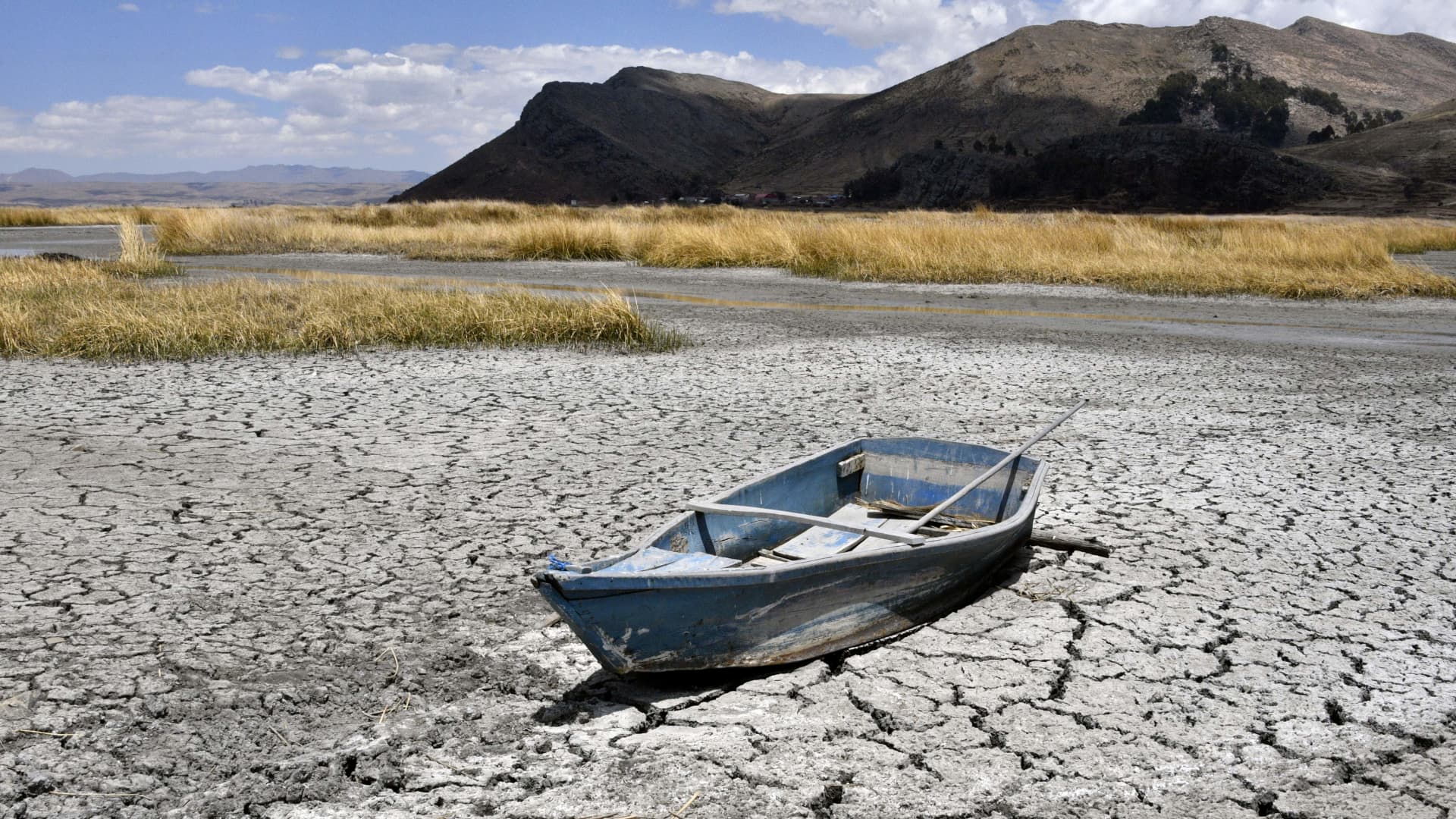A boat is grounded on cracked earth in the Bahia (Bay) Cohana area of Lake Titicaca, shared by Bolivia and Peru, in the Bolivian Altiplano on September 22, 2023.
Aizar Raldes | Afp | Getty Images
2023 is on course to be the hottest year on record, scientists warned on Thursday, following extraordinarily high temperatures in September and the hottest summer in human history.
The European Union’s Copernicus Climate Change Service (C3S) said global average temperatures for January through to September were 1.4 degrees Celsius higher than the preindustrial period of 1850 to 1900.
This was just over 0.5 degrees Celsius higher than average and 0.05 degrees Celsius higher the equivalent period in 2016 — the current hottest year on record.
Scientists at C3S said September logged the largest temperature anomalies of any year stretching back to 1940, with the month as a whole found to be a staggering 1.75 degrees Celsius warmer when compared to the preindustrial reference period.
September’s temperature anomalies prompted one researcher to describe the findings as nothing less than “absolutely gobsmackingly bananas.”
Extreme heat is fueled by the climate crisis, the chief driver of which is the burning of fossil fuels.
“The unprecedented temperatures for the time of year observed in September — following a record summer — have broken records by an extraordinary amount,” Samantha Burgess, deputy director of the Copernicus Climate Change Service, said in a statement.
“This extreme month has pushed 2023 into the dubious honour of first place — on track to be the warmest year and around 1.4°C above preindustrial average temperatures.”
Burgess said that two months out from the COP28 climate conference, “the sense of urgency for ambitious climate action has never been more critical.”
World leaders will convene in Dubai in the United Arab Emirates from Nov. 30 through to Dec. 12 for talks on how to address the worsening climate crisis.
‘Humanity has opened the gates to hell’
As had been widely expected, a major U.N. report published last month confirmed that the world is currently not on track to meet the long-term goals of the 2015 Paris Agreement, a landmark accord that aims to pursue efforts to limit global warming to 1.5 degrees Celsius above preindustrial levels.
The world has already warmed by around 1.1 degrees Celsius after over a century of burning fossil fuels as well as unequal and unsustainable energy and land use. Indeed, it is this temperature increase that is fueling a series of extreme weather events around the world.
For Europe, scientists at C3S said September 2023 was the warmest September on record at more than 2.5 degrees Celsius higher than the 1991 to 2020 average and 1.1 degrees Celsius than September 2020, the previous warmest.
Supporters of the Fridays for Future (FFF) climate activism group protest during a worldwide Fridays for Future climate strike on September 15, 2023 in Berlin, Germany.
Maja Hitij | Getty Images News | Getty Images
C3S also said El Niño conditions continued to develop over the equatorial eastern Pacific.
El Niño is a naturally occurring climate pattern that contributes to higher temperatures across the globe. The U.N. weather agency declared the onset of El Niño on July 4, warning its return paves the way for a likely spike in global temperatures and extreme weather conditions.
Pope Francis warned on Wednesday that “the world in which we live is collapsing and may be nearing the breaking point.”
His comments followed a dire warning from U.N. Secretary-General António Guterres last month. Speaking at the U.N. headquarters in New York City in mid-September, Guterres said “humanity has opened the gates to hell.”
“Horrendous heat is having horrendous effects,” he added. “Distraught farmers watching crops carried away by floods; Sweltering temperatures spawning disease; And thousands fleeing in fear as historic fires rage.”





















Discussion about this post